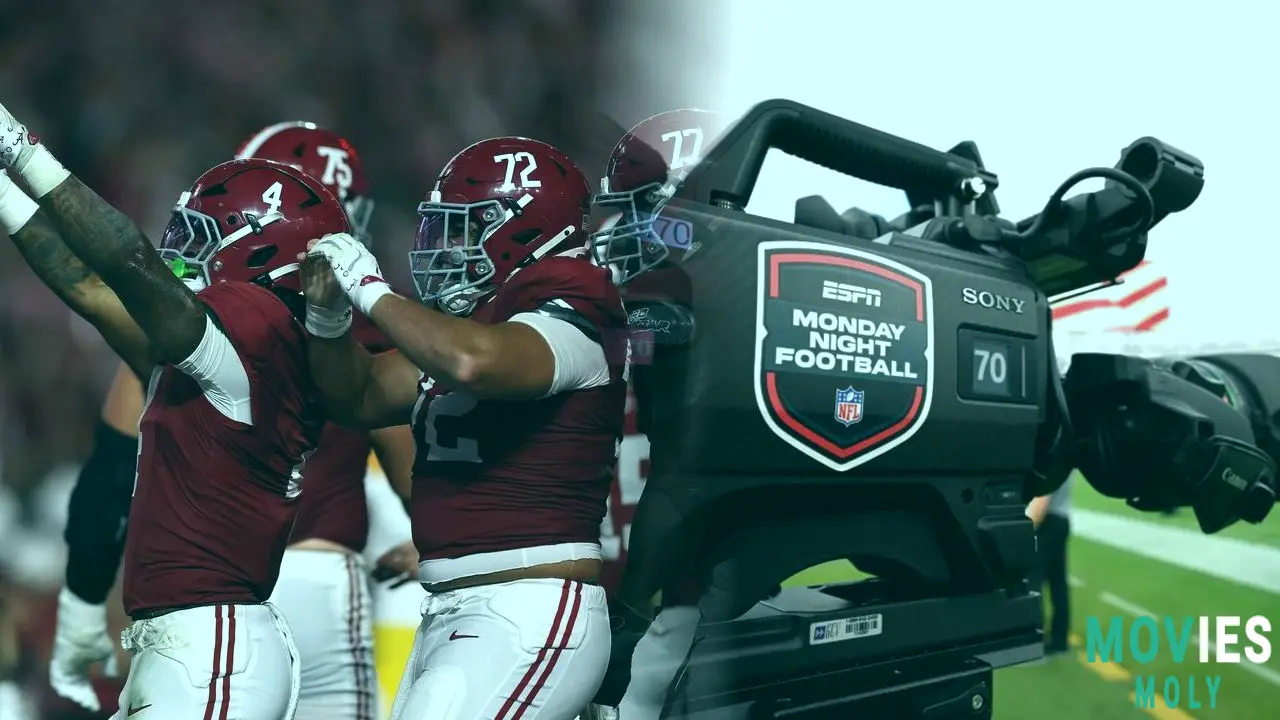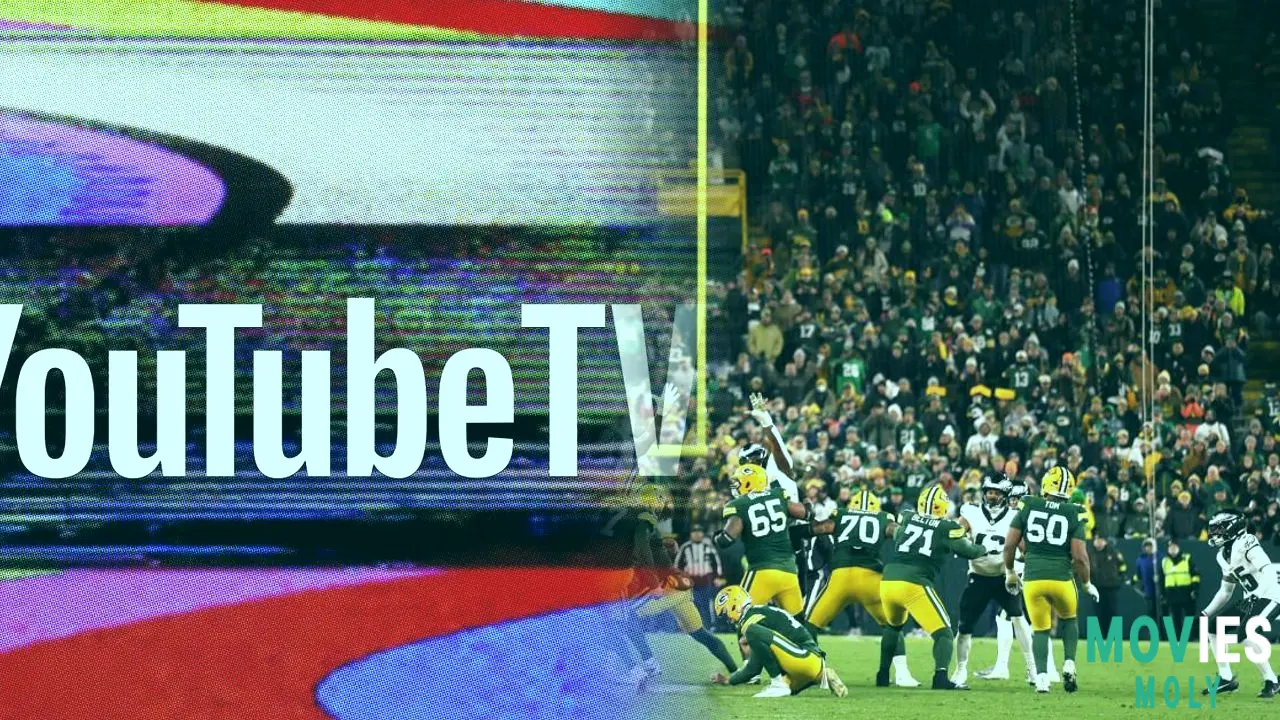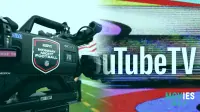After a tense two-week standoff, YouTube TV and Disney have finally reached a multi-year agreement, bringing back everything from college football to your daily dose of Jeopardy! for millions of subscribers.
TL;DR: The Big Takeaways
- Blackout Over: Disney and YouTube TV settled their dispute on November 14, 2025, restoring ABC, ESPN, FX, and other channels to subscribers.
- New Perks: The deal includes ESPN's new direct-to-consumer "Unlimited" service at no extra cost for YouTube TV users, plus options for the Disney+/Hulu bundle.
- Subscriber Relief: Following a nearly 15-day disruption, YouTube TV issued a $20 credit to affected customers who missed out on key programming.
Imagine settling down on a Friday night, ready for your usual dose of entertainment or gearing up for a big college football weekend, only to find your favorite channels completely gone. That was the frustrating reality for millions of YouTube TV subscribers for nearly 15 days, as a high-stakes contract dispute between Google-owned YouTube TV and Disney left screens blank where ABC, ESPN, FX, and many other beloved channels once stood. TechCrunch's Amanda Silberling even light-heartedly lamented that the blackout was "ruining her life" because she couldn't watch "Jeopardy!" (Source: TechCrunch, "Disney and YouTube TV reach deal to end blackout," November 15, 2025). Thankfully, the nightmare is over.
On Friday, November 14, 2025, both media giants announced they had finally struck a multi-year distribution agreement. This means that by the end of the day, or within 24 hours, channels like ABC, ESPN, FX, Freeform, Nat Geo, SEC Network, and ACC Network began to reappear for the service's estimated 10 million subscribers. The timing was perfect, just in time for fans to catch the weekend's college football lineup, much to the relief of sports enthusiasts across the country.
Behind the Scenes of the Contentious Contract Battle Between GiantsThe core of this lengthy dispute, like many others in the modern streaming landscape, boiled down to money: licensing fees and the flexibility with which content could be bundled and offered to consumers. Disney, a content powerhouse, argued that YouTube TV was refusing to pay "fair rates" for its channels, claiming the platform was "using its market dominance to eliminate competition." (Source: The Associated Press, "Disney and YouTube TV reach new deal, ending blackout," November 14, 2025). The entertainment conglomerate was keen to secure revenue to support its massive content production costs, ambitious streaming ventures like Disney+, and the enormous price tags associated with ESPN’s sports rights deals, particularly with the NFL and NBA.
Conversely, YouTube TV accused Disney of proposing "costly terms" that would inevitably lead to higher prices and fewer choices for its subscribers. They contended that Disney was leveraging the blackout as a negotiating tactic, one that could also inadvertently benefit Disney’s own competing streaming products, such as Hulu + Live TV and Fubo. YouTube TV emphasized its role as a "cable TV alternative for cord cutters" and aimed to "preserve the value of our service for our subscribers and future flexibility in our offers." (Source: TechCrunch, "Disney and YouTube TV reach deal to end blackout," November 15, 2025).
The High Stakes of Live Sports and Viewer Frustration
For many subscribers, the blackout hit hardest when it came to live sports. Two full weekends of college football, including critical matchups like Alabama-LSU, and two "Monday Night Football" games featuring teams like the Philadelphia Eagles and Green Packers, were inaccessible. This absence triggered widespread frustration, not just from casual viewers but from dedicated fans whose weekly routines often revolve around these broadcasts.
Example: Consider the scenario of the Miller family in Ohio, die-hard fans of college football. Every Saturday during the season, their living room transforms into a mini-stadium, complete with snacks and team jerseys. When the blackout hit, they missed their favorite team's crucial rivalry game. They scrambled to find alternative viewing options, trying out a competitor's free trial, but it didn't feel quite the same without their usual YouTube TV setup, including their saved DVR recordings. The disruption felt personal, a direct affront to their cherished weekend tradition.
YouTube TV tried to soften the blow by offering a $20 credit to subscribers for the missed content, a gesture that helped alleviate some of the immediate financial frustration but couldn't bring back the missed live moments. The impact wasn't just on viewers' spirits; it had a measurable effect. One survey suggested that a significant 24% of YouTube TV's more than 10 million subscribers either canceled their subscription or planned to do so soon due to the Disney blackout. While a YouTube spokesperson commented that actual churn was "manageable and does not align with the findings of this survey," the potential for subscriber loss was clearly a concern for the platform. Meanwhile, Disney was reportedly losing a staggering $30 million a week during the blackout, highlighting the enormous financial pressures on both sides to reach an agreement. (Source: The Athletic, "YouTube TV, Disney reach deal to restore access to ESPN networks after two-week standoff," November 14, 2025).
"We are pleased that our networks have been restored in time for fans to enjoy the many great programming options this weekend, including college football."
— Disney Entertainment Co-Chairmen Alan Bergman and Dana Walden, and ESPN Chairman Jimmy Pitaro
Executive Intervention and Industry-Wide Implications of Content Disputes
As the stalemate dragged on, the stakes grew higher, eventually drawing in top leadership. Sources familiar with the negotiations indicated that Sundar Pichai, CEO of Google (YouTube TV's parent company), and Bob Iger, CEO of Disney, became directly involved in the final days of discussions. This level of executive intervention underscores the critical nature of these carriage deals for both companies, affecting everything from subscriber retention to quarterly earnings. Even FCC Chairman Brendan Carr weighed in publicly, urging both Google and Disney to "get a deal done and end this blackout," emphasizing that "people should have the right to watch the programming they paid for — including football." (Source: Newsweek, "Pat McAfee Celebrates ESPN-YouTube TV Deal to End Blackout," November 15, 2025).
This wasn't an isolated incident. YouTube TV, which started in 2017 with a $35 monthly package and now costs $82.99, has a history of disputes with major content providers. The last time YouTube and Disney renegotiated in 2022, there was a similar, though significantly briefer, blackout. More recently, YouTube TV has faced disagreements with Fox Corp., Comcast's NBCUniversal, and Univision. The dispute with Univision, for instance, revolved around YouTube's plan to move Spanish-language channels into a separate, less-subscribed tier, which would reduce revenue for programmers paid based on household reach.
These ongoing skirmishes highlight a significant tension in the media industry: the battle between traditional content providers, who need to maintain revenue streams to cover escalating content costs (especially sports rights, with ESPN being the most expensive basic cable channel at nearly $10 per subscriber per month), and distributors like YouTube TV, who aim to offer an affordable, flexible alternative to traditional cable. As more viewers "cut the cord," the shrinking pool of big-bundle subscribers is increasingly asked to shoulder higher programming expenses, making distributors wary of constant price hikes.
What the New Deal Brings to YouTube TV Subscribers
The multi-year distribution agreement reached on November 14, 2025, isn't just about restoring channels; it also introduces new features and flexibility. A major win for subscribers is the inclusion of ESPN’s new direct-to-consumer "Unlimited" service, which will be available at no additional cost as part of YouTube TV's base plan. This is particularly good news for fans of WWE, as major events like WrestleMania are now part of ESPN’s Unlimited offering, with a full rollout expected by the end of 2026. (Source: The Athletic, "YouTube TV, Disney reach deal to restore access to ESPN networks after two-week standoff," November 14, 2025).
Beyond the ESPN Unlimited offering, the deal allows YouTube to sell select Disney networks and the Disney+/Hulu bundle as part of different packages. This means subscribers could see more flexible bundling options, potentially tailoring their services closer to their specific entertainment needs. The agreement also specified that content from ESPN Unlimited would be integrated into the YouTube TV user experience, meaning subscribers could access it within the YouTube TV app, rather than having to switch to a separate ESPN app. This improved "ingestion" of content was a key priority for Disney negotiators, allowing for a more seamless viewing experience.
Navigating the Future of Streaming and Content Availability

While the immediate crisis is over, this latest blackout serves as a potent reminder of the volatile nature of streaming service agreements. As content creation costs continue to climb and viewership habits evolve, these negotiations are likely to remain a recurring feature of the media landscape. Consumers, caught in the middle, often bear the brunt of these disputes, facing temporary loss of access to their favorite programming. Disney CFO Hugh Johnston, for instance, indicated Disney was "ready to go as long as they want to" during the negotiations, even with reported weekly losses, underscoring the deep resolve involved in these high-stakes talks.
The successful resolution, however, also shows that these giants can find common ground, albeit after intense negotiation and public sparring. It also highlights the growing importance of direct-to-consumer offerings like ESPN Unlimited, as media companies seek to diversify their distribution strategies beyond traditional cable and live TV streaming platforms. For subscribers, it means a continued balancing act between comprehensive channel lineups and managing ever-increasing subscription costs.
Practical Takeaways for Your Streaming Habits
- Stay Informed: Keep an eye on news from your streaming providers about contract negotiations. Early warnings can help you prepare.
- Explore Alternatives: If a blackout occurs, temporary free trials from competitors like DIRECTV Stream or Sling TV (which offered one-day passes for ESPN) can bridge the gap for critical live events.
- Leverage Bundles: Take advantage of new bundled offers, such as the Disney+/Hulu option through YouTube TV, to maximize value and access.
- Check Channel Listings: Confirm which specific channels are included in your base package and which might be part of add-ons, especially with the introduction of services like ESPN Unlimited.
- Expect Price Evolution: The cost of streaming services is dynamic. Be prepared for potential price adjustments as content costs and distribution deals continue to shift.
Frequently Asked Questions About the Disney-YouTube TV Deal

When did the Disney and YouTube TV channels return?
The channels began to be restored on Friday, November 14, 2025, with full restoration expected within 24 hours.
Which channels were affected by the blackout?
The blackout impacted a wide range of Disney-owned channels, including ABC, ESPN, ESPN2, FX, Freeform, Nat Geo, SEC Network, ACC Network, Disney Channel, Disney Junior, Disney XD, ESPNews, ESPNU, FXM, FXX, and Localish. Spanish-language channels like Baby TV Español, ESPN Deportes, and Nat Geo Mundo were also affected.
Did YouTube TV subscribers receive any compensation?
Yes, YouTube TV offered affected subscribers a $20 credit on their next bill as compensation for the disruption.
Is ESPN's new "Unlimited" service included in YouTube TV now?
Yes, ESPN's new direct-to-consumer "Unlimited" service is now available to YouTube TV subscribers at no additional cost as part of their base plan, with a full rollout anticipated by the end of 2026.
Sources

- Ha, Anthony. "Disney and YouTube TV reach deal to end blackout." TechCrunch, November 15, 2025.
- The Associated Press. "Disney and YouTube TV reach new deal, ending blackout." ESPN, November 14, 2025.
- Helsel, Phil and Kottke, Joe. "Disney, YouTube TV reach deal, ending blackout." NBC News, November 14, 2025.
- James, Meg. "Disney settles dispute with YouTube TV, allowing ABC and ESPN to return to channel lineups." Los Angeles Times, November 14, 2025.
- Marchand, Andrew. "YouTube TV, Disney reach deal to restore access to ESPN networks after two-week standoff." The Athletic, November 14, 2025.
- Couden, Matthew. "Pat McAfee Celebrates ESPN-YouTube TV Deal to End Blackout." Newsweek, November 15, 2025.
- Hayes, Dade. "Disney And YouTube TV Reach Carriage Deal, Ending 15-Day Standoff." Deadline, November 14, 2025.
- Cooper, Gael. "Touchdown! Disney, ESPN and Other Channels Are Back on YouTube TV." CNET, November 14, 2025.




